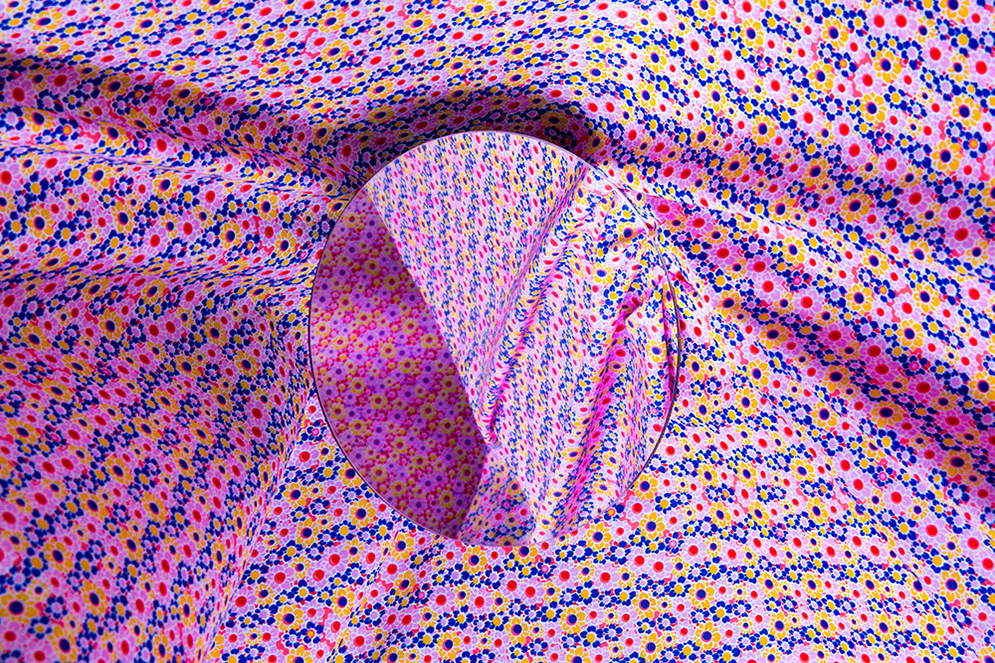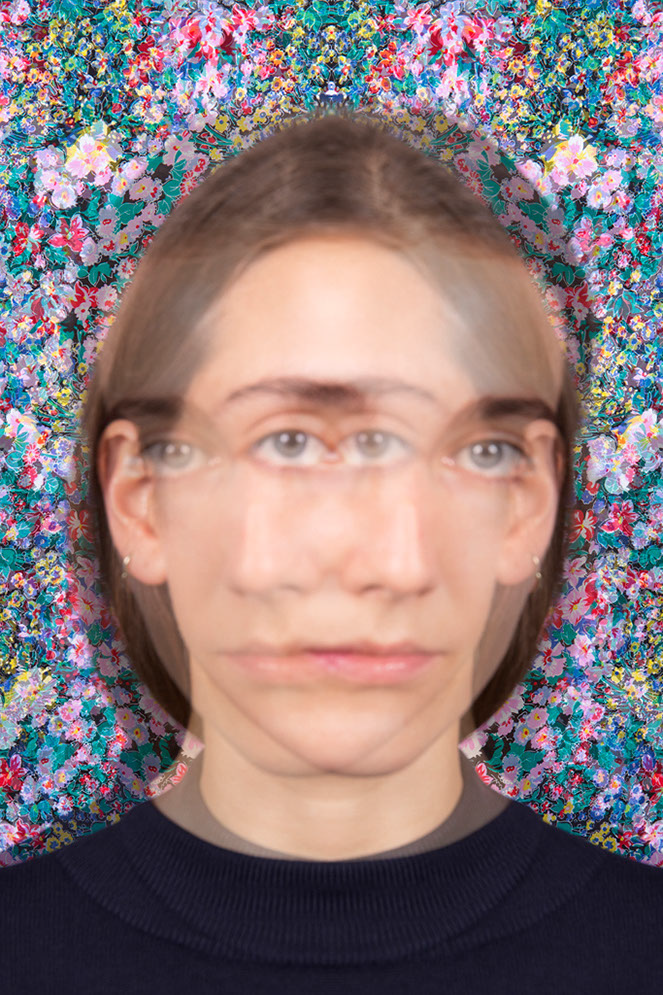My déjà vu is so extreme I can't tell what's real any more
When a brain tumour left Pat Long with persistent déjà vu, he began to question the very nature of reality. Here, he tells his story for the first time

Your support helps us to tell the story
This election is still a dead heat, according to most polls. In a fight with such wafer-thin margins, we need reporters on the ground talking to the people Trump and Harris are courting. Your support allows us to keep sending journalists to the story.
The Independent is trusted by 27 million Americans from across the entire political spectrum every month. Unlike many other quality news outlets, we choose not to lock you out of our reporting and analysis with paywalls. But quality journalism must still be paid for.
Help us keep bring these critical stories to light. Your support makes all the difference.
One drab afternoon a few years ago something very unusual happened to me.
I was lounging under a tree in a packed east-London park when I experienced a sudden feeling of vertigo, followed immediately by an overwhelming and intense sense of familiarity.
The people around me vanished and I found myself lying on a tartan picnic blanket amid a field of high golden wheat. The memory was rich and detailed. I could hear the sway of the wheat ears as a gentle breeze brushed through them. I felt warm sunlight on the back of my neck and watched as birds wheeled and floated above me.
It was a pleasant and extremely vivid recollection. The problem was that it never actually happened. What I was experiencing was an extreme form of a very common mental illusion: déjà vu.
We view our memories as sacred. One of the most fundamental doctrines of Western philosophy was established by Aristotle. He saw a newborn baby as a kind of empty ledger, one that is gradually filled as the child grows and accumulates knowledge and experience.
Whether it’s how to tie a shoelace or recalling your first day at school, memories make up the autobiographical map that helps us navigate the present day. Jingles from old television adverts, the name of the second-to-last prime minister, the punchline to a joke: memories are the constituent parts of individual identities.
Most of the time memory systems run quietly in the background as we go about the business of everyday life. We take their efficiency for granted. Until, that is, they fail.

For the past five years I have been suffering epileptic seizures resulting from the growth and eventual removal of a lemon-sized tumour from the right-hand side of my brain. Before my diagnosis I appeared fit and healthy: I was in my mid-thirties and displayed absolutely no symptoms. Until, that is, the afternoon that I woke up on the kitchen floor with two black eyes after suffering my first recorded seizure.
Seizures, or fits, occur after an unanticipated electrical discharge in the brain. They are usually preceded by something called an “aura”, a sort of minor foreshock lasting anything up to a couple of minutes before the main event begins. The nature of this aura differs greatly from patient to patient. Some people experience synaesthesia, extreme euphoria and even orgasm at the onset of a seizure. My own aren’t nearly as exciting-sounding, being distinguished by sudden shifts in perspective, a rapidly increased heart rate, anxiety, and the occasional auditory hallucination.
Pioneering English neurologist John Hughlings Jackson was the first to define the epileptic aura, observing in 1898 that its hallmarks included vivid memory-like hallucinations, often alongside the feeling of déjà vu. “Old scenes revert,” one patient told him. “I feel,” said another, “in some strange place.”
By far the most significant trait of my aura is the striking sense of having lived through that precise moment before at some point in the past – even though I never have. During my most intense seizures, and for a week or so afterwards, this feeling of precognition becomes so pervasive that I routinely struggle to discern the difference between lived events and dreams, between memories, hallucinations and the products of my imagination.
I don’t remember déjà vu happening with any kind of regularity before the onset of my epilepsy. Now it occurs with varying degrees of magnitude up to ten times a day, whether as part of a seizure or not. I can find no pattern to explain when or why these episodes manifest themselves, only that they usually last for the length of a pulse before vanishing.
Many of the estimated 50 million people in the world with epilepsy experience long-term memory decline and psychiatric problems. And it’s hard for me not to worry whether the blurring of fact and fiction that I experience might one day engender a kind of mania. By trying to understand more about déjà vu, I’m hoping to make sure that I never lose my way on the path back to reality from that same “strange place”.
***
In Catch-22, Joseph Heller described déjà vu as “a weird, occult sensation of having experienced the identical situation before in some prior time or existence”. Peter Cook put it his own way in a magazine column: “All of us at one time or another have had a sense of déjà vu, a feeling that this has happened before, that this has happened before, that this has happened before.”
Taken from the French for “already seen”, déjà vu is one of a group of related quirks of memory. Research from 50 different surveys suggests that around two-thirds of healthy people have experienced déjà vu at one time or another. For the majority, it is dismissed as a curiosity or a mildly interesting cognitive illusion.
While déjà vu is instantaneous and fleeting, déjà vécu (already lived) is far more troubling. Unlike déjà vu, déjà vécu involves the sensation that a whole sequence of events has been lived through before. What’s more, it lacks both the startling aspect and instantly dismissible quality of déjà vu.

A defining feature of the normal déjà-vu experience is the ability to discern that it isn’t real. On encountering déjà vu, the brain runs a sort of sense check, searching for objective evidence of the prior experience and then disregarding it as the illusion that it is. People with déjà vécu have been known to lose this ability completely.
Professor Chris Moulin, one of the foremost experts on the déjà experience, describes a patient he encountered while working at a memory clinic at a hospital in Bath, England. In 2000, Moulin received a letter from a local GP referring an 80-year-old former engineer known as AKP. As a result of gradual brain-cell death caused by dementia, AKP was now suffering from chronic and perpetual déjà vu: déjà vécu.
AKP claimed that he had given up watching television or reading the newspaper because he knew what was about to happen. “His wife said that he was someone who felt as though everything in his life had happened before,” says Moulin, now at the Laboratoire de Psychologie et NeuroCognition CNRS in Grenoble. AKP was resistant to the idea of visiting the clinic because he felt as though he’d already been there, despite the fact that he never had. On being introduced to Moulin for the first time, the man even claimed to be able to give specific details of occasions that they had met before.
AKP did retain some self-awareness. “His wife would ask him how he could know what would happen in a television programme if he’d never seen it before,” says Moulin, “to which he would respond, ‘How would I know? I have a memory problem.’”
On that day in the park, my vision of the picnic blanket and the wheat field disappeared when a paramedic began to shake my shoulder. Despite the fact that my memories had been hallucinations, they still felt as valid as any truly autobiographical memory. Moulin classes this as a form of déjà experience in which an image is somehow imbued with a sense of reality.
“Our feeling is that déjà vu is caused by a sense of familiarity,” he says. “Rather than just feeling like something has a feeling of ‘pastness’ about it, something comes to mind that has a phenomenological characteristic, so that it appears to be a real reminiscence.”
Other patients of Moulin’s have exhibited what cognitive scientists call “anosognosic” tendencies, either being unaware of their condition or lacking the immediate capacity to tell memory from fantasy. “I spoke to one woman who said that her feelings of déjà vu were so strong that they were for her exactly like autobiographical memories,” Moulin tells me. “Some of the things that happened to her were quite fantastic; she’d have memories of taking helicopter flights. These memories were hard for her to overcome because she had to spend a long time trying to work out whether something had happened.”
After his first encounter with AKP, Moulin began to become interested in the causes of déjà vu and how subjective feelings can interfere with day-to-day memory processes. Discovering that there was very little credible literature describing the causes of déjà vu, Moulin and colleagues at the Language and Memory Lab at the Institute of Psychological Sciences, University of Leeds, began to study epileptics and other sufferers of profound memory defects in order to draw conclusions about déjà experiences in the healthy brain and explore what déjà vu means for the workings of consciousness generally.
They were faced with an immediate problem: déjà-vu experiences can be so transitory and short-lived that they are almost impossible to recreate in clinical conditions. The job that they faced, then, was one of trying to catch lightning in a bottle.
***
Émile Boirac was a 19th-century psychic researcher and parapsychologist with an interest in clairvoyance typical of the Victorian era. In 1876, he wrote to a French philosophy journal to describe his experience of arriving in a new city but feeling as though he had visited it before. Boirac coined the phrase déjà vu. He suggested that it was caused by a sort of mental echo or ripple: that his new experience simply recalled a memory that had previously been forgotten.
While this theory is still considered plausible, subsequent attempts at explaining déjà vu experiences have tended towards the more outlandish.
Sigmund Freud’s 1901 book The Psychopathology of Everyday Life is most famous for exploring the nature of the Freudian slip, but it also discusses other defects in the process of recollection. The book documents one female patient’s déjà experiences: on entering a friend’s house for the first time, the woman had the feeling that she had visited before and claimed to know each successive room in the house before she walked through it.
What Freud’s patient experienced as she walked through the house would now be described specifically as déjà visité, or “already visited”. Freud attributed his patient’s feeling of déjà visité to the manifestation of a repressed fantasy that only surfaced when the woman encountered a situation analogous to an unconscious desire.
Again, this theory hasn’t been entirely discredited, although somewhat typically Freud also suggested that déjà vu could be traced back to a fixation on the mother’s genitals, the sole place that, he wrote, “one can assert with such conviction that one has been there before”.

The accepted scientific definition of déjà vu was formulated by South African neuropsychiatrist Vernon Neppe in 1983 as “any subjectively inappropriate impression of familiarity of the present experience with an undefined past”. He also identified 20 separate forms of déjà experience. Not all of them were related to seeing: one of Chris Moulin’s patients was a man who had been blind since birth yet claimed to have experienced déjà vu, while Neppe’s descriptions of déjà experiences include déjà senti (already felt) and déjà entendu (already heard).
Freud’s diagnosis of déjà vu as a purely psychological phenomenon – rather than one caused by neurological errors – had the unfortunate effect of shifting explanations for déjà experiences towards the absurdly mystical.
In 1991 a Gallup poll of attitudes towards déjà vu placed it alongside questions about astrology, paranormal activity and ghosts. Many people consider déjà vu to be outside the realm of everyday cognitive experience, with assorted cranks and crackpots claiming it to be incontrovertible proof of extrasensory perception, alien abduction, psychokinesis or past lives.
It’s not hard for me to feel sceptical about this last explanation in particular, but these fringe theories mean that déjà vu has received very little attention from mainstream science. Only now, almost 150 years after Émile Boirac invented the phrase, are researchers like Chris Moulin beginning to understand what actually causes the system errors in what neuroscientist Read Montague memorably called the “wet computer” of the brain.
***
The hippocampus is a beautiful looking thing. The mammalian brain contains two hippocampi, positioned symmetrically at the bottom of the brain. “Hippocampus” is the ancient Greek word for seahorse, and there’s a resemblance in the way that a seahorse’s delicate tail coils in on itself to meet its long snout. It’s only in the last 40 years that we have really begun to understand what these delicate structures do.
Scientists used to think of memories as being arranged together tidily in one place, like documents in a filing cabinet. This consensus was overturned in the early 1970s when cognitive neuroscientist Professor Endel Tulving proposed his theory that memories actually belong to one of two distinct groups.
What Tulving called “semantic memory” refers to general facts that have no real bearing on personality, being independent of personal experience. “Episodic memories”, meanwhile, consist of recollections of life events or experiences. The fact that the Natural History Museum is in London is a semantic memory. The time that I visited it on a school trip at the age of 11 is an episodic one.
Aided by advances in neuroimaging, Tulving discovered that episodic memories are generated as small pieces of information at different points across the brain and then reassembled into a coherent whole. He saw this process as akin to actually experiencing episodic memories again. “Remembering,” he said in 1983, “is mental time travel, a sort of reliving of something that happened in the past.”
Many of these memory signals arose from the hippocampus and the area surrounding it, suggesting that the hippocampus is the brain’s librarian, responsible for receiving information already processed by the temporal lobe, then sorting, indexing and filing it as episodic memory. Just as a librarian might order books by subject matter or author, so the hippocampus identifies common features between memories. It might use analogy or familiarity, for example grouping all memories of various museum visits together in one place. These commonalities are then used to link the constituent parts of episodic memories together for future retrieval.
It’s no coincidence that people with epilepsy whose seizures tend to trigger déjà vu are those whose seizures originate in the part of the brain most involved with memory. Nor is it surprising to learn that temporal lobe epilepsy affects episodic memory more than semantic memory. My own epilepsy originates in the temporal lobe, a region of the cerebral cortex tucked behind the ear and responsible primarily for the processing of incoming sensory information.
In his book The Déjà Vu Experience, Professor Alan S Brown offers 30 different explanations for déjà vu. According to him, any one alone may be enough to trigger a déjà experience. As well as a biological dysfunction like epilepsy, Brown writes that stress or tiredness could cause déjà vu.
My experiences of déjà vu began during the long period of recuperation following my brain surgery, a time spent almost entirely indoors, moving in and out of a series of semi-conscious states that mostly included being sedated with opiates, sleeping and watching old movies. This recuperative twilight state might have made me more susceptible to déjà experiences, through being fatigued, taking in an excess of sensory information or relaxing to the point of being comatose. But my situation was clearly an unusual one.
Brown is also a proponent of what is called the divided perception theory. First described in the 1930s by Dr Edward Bradford Titchener, divided perception refers to the times when the brain isn’t quite paying enough attention to its surroundings. Titchener used the example of a person about to cross a busy street before being distracted by a shop window display. “As you cross,” he wrote, “you think, ‘Why, I crossed this street just now’; your nervous system has severed two phases of a single experience, and the latter appears as a repetition of the earlier.”
For much of the last century this idea was accepted as a plausible trigger of déjà vu. Another common explanation was one offered by a doctor working at the Boston veterans’ hospital. In 1963 Robert Efron suggested that déjà vu could be caused by a sort of processing error: he believed that brains were responsible for assimilating events through the temporal lobe before then adding a sort of timestamp to them to determine when they happened.
Efron saw déjà vu as resulting from the lag between seeing and adding that time stamp: if the process took too long, the brain would think that an event had already happened.
But Alan Brown and Chris Moulin both agree that the way that the hippocampus indexes memories by cross-referencing them according to familiarity is a more likely cause of déjà vu.
“My belief is that a per-seizure déjà-vu experience is triggered by spontaneous activity in that area of the brain that handles familiarity evaluations,” says Brown. Probably, he says, in the area surrounding the hippocampus, and most likely on the right side of the brain. The precise point at which I have a lemon-shaped hole.
***
At Duke University’s Department of Psychology & Neuroscience, Alan Brown and Elizabeth Marsh devised an experiment to test Brown’s theory that déjà-vu experiences are caused by an error when the hippocampus does its job of grouping memories. At the start of the experiment, students from Marsh’s and Brown’s universities (Duke and the Southern Methodist University in Dallas) were briefly shown photographs of locations – dorm rooms, libraries, classrooms – on the two campuses.
A week later the students were shown the same pictures, this time with new images inserted into the set. When asked if they’d visited all of the locations in the photographs, a portion of the students replied yes – even if the photograph in question was of the rival campus. Many university buildings look the same, so by planting the seed of confusion about which places the students had actually visited, Brown and Marsh were able to conclude that just one element of an image or experience can be enough for the brain to call up a familiar memory.
Chris Moulin and his University of Leeds colleague Dr Akira O’Connor had already recreated déjà vu in lab conditions in 2006. Their aim was to find out more about the process of memory retrieval by exploring the difference between the brain registering an experience and then running that sense check to see if the same experience had actually occurred before or not.
Moulin suggests that déjà vu is caused by a “momentary overinterpretation of familiarity, something that comes about through panic or stress or that triggers a sense of something other. You’ve got this very excitable part of the brain which is just scanning the environment all the time looking for familiarity”. He adds: “And something goes on in déjà vu which means [there’s] some other information inbound later that says, ‘This can’t be familiar.’”
Moulin concluded that the brain operates a sort of spectrum of memory retrieval, ranging from the completely successful interpretation of visual memory at one end and a full state of perpetual déjà vécu at the other. At some point along the spectrum lies déjà vu – neither as serious as déjà vécu, nor as seamless as the way that the brain should be working.
Moulin also suggests that somewhere in the temporal lobe is a mechanism for regulating the process of remembering. Problems with this – like the ones caused by my temporal lobe epilepsy – can leave patients without any kind of fallback to let them know that what they’re seeing has never happened to them before, effectively trapping them forever in a Moebius strip of memory.
But why do normally healthy people encounter it?
Brown suggests that déjà vu happens to healthy people only a few times a year at most, but can be stimulated by environmental factors. “People experience it mainly when they are indoors,” he says, “doing leisure activities or relaxing, and in the company of friends; fatigue or stress frequently accompany the illusion.” He says that déjà vu is relatively brief (10 to 30 seconds), and is more frequent in the evening than in the morning, and on the weekend than on weekdays.

Some researchers claim a connection between the ability to remember dreams and the likelihood of experiencing déjà vu. In his work, Brown suggests that although déjà vu occurs equally in women and men, it is more common in younger people, those that are well-travelled, earn higher incomes and whose political and social outlooks are more aligned to the liberal.
“There are some plausible explanations for this,” he tells me. “People who travel more have more opportunities to encounter a new setting that they may find strangely familiar. People with liberal beliefs may be more likely to admit to having unusual mental experiences and willing to figure them out. A conservative mindset would likely avoid admitting to having strange mental events, as they might be seen as a sign that they are unstable.
“The age issue is a puzzle because memory usually gets more quirky as we age, rather than the other way around. I would guess that young people are more open to experiences and more in touch with unusual mental happenings.”
One of the first comprehensive studies of déjà vu was conducted in the 1940s by a New York undergraduate student called Morton Leeds. Leeds kept an extraordinarily detailed diary of his frequent déjà experiences, noting 144 episodes over the course of a year. One of these episodes, he wrote, was “so strong that it almost nauseated me”.
Following my most recent seizures I’ve experienced something similar. The shock of repeated déjà vu isn’t physical, necessarily, but instead causes a kind of psychic pain that can feel physically sickening. Dream images suddenly interrupt normal thoughts. Conversations seem to have already taken place. Even banal things like making a cup of tea or reading a particular newspaper headline seem familiar. It feels occasionally like I’m flicking through a photo album containing nothing but the same picture reproduced endlessly.
Some of these sensations are easier to dismiss than others. Coming closer to finding an answer to what causes déjà vu also means approaching a kind of resolution for my more persistent déjà episodes, the ones that are the hardest of all to live with.
The night before completing this piece I had another seizure. The deadline had clearly been on my mind, as I suddenly had an intense memory of sitting down to write these closing sentences. When I regained my composure enough to read the finished article the next day, there was nothing here but blank space. It was another illusion. Now I’m actually typing this conclusion. It is, to borrow a famous solecism, like déjà vu all over again.
This article first appeared on Mosaic and is republished here under a Creative Commons licence
Subscribe to Independent Premium to bookmark this article
Want to bookmark your favourite articles and stories to read or reference later? Start your Independent Premium subscription today.
Join our commenting forum
Join thought-provoking conversations, follow other Independent readers and see their replies
Comments